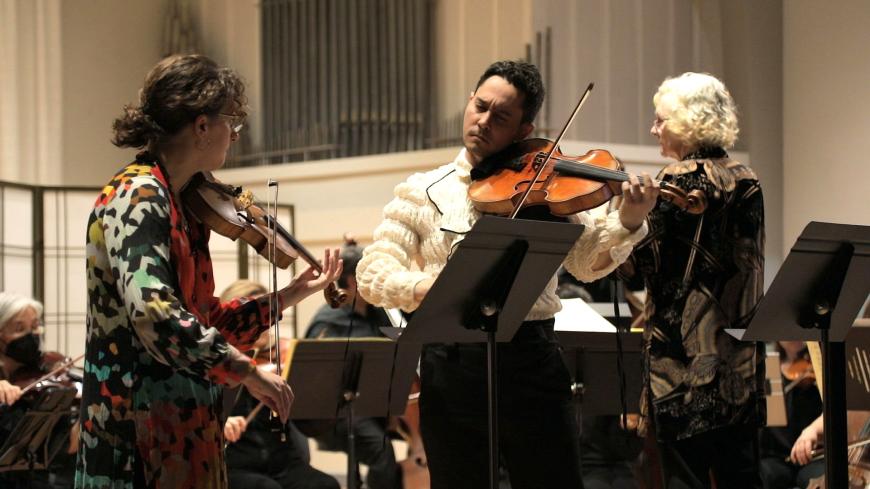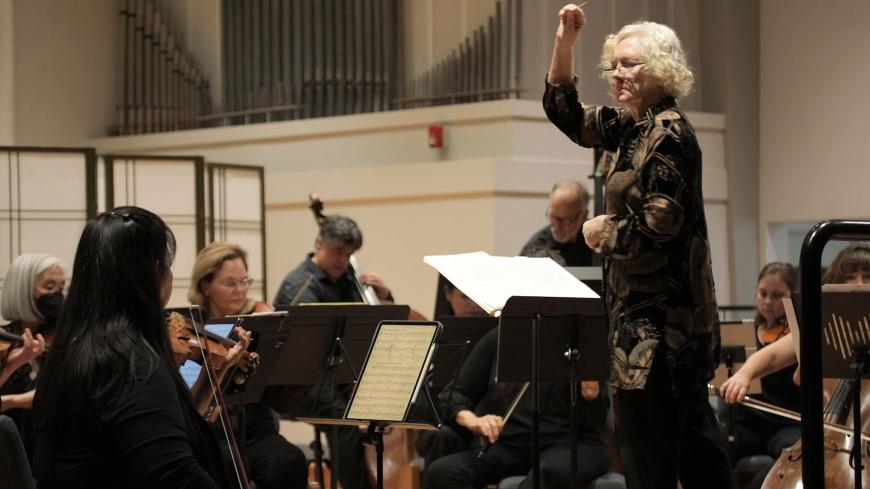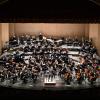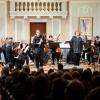
The San José Chamber Orchestra opened its 33rd season on Sunday, Oct. 15, at St. Francis Episcopal Church with a compact concert only 70 minutes long. Music Director Barbara Day Turner introduced the program with a suggestion that it depicts a visit to the theater in Mexico City. Two works for string orchestra by Mexican composers conveyed a ride on the city’s Metro system and the things one might see along the way. And upon “arriving at the theater,” we settled down for a performance of Mozart’s Sinfonia Concertante in E-flat Major, K. 364.
The sinfonia concertante was an 18th-century genre that supposedly represented a cross between the symphony and the concerto. In practice, it was more often simply a concerto with two solo instruments instead of one — in Mozart’s case, a violin and a viola. This piece gives the impression that Mozart constructed it by writing the same concerto twice and then welding the two together. It employs a lot of repetition: First the violin plays a solo passage, then the viola plays the same figure. For variety, sometimes the viola comes first.

Mozart’s score is at its best in the central Andante, which has less duplication and more variety than the outer movements. This performance’s knack for keeping the music from sounding repetitious or tedious owed above all to the two soloists, who sounded profoundly different from one another. Each captured the stereotypical essence of his or her instrument. Liana Bérubé played her violin with a high, chirping tone. She evoked a free and expressive style visually as well as musically, moving around a bit, channeling Joshua Bell for a moment there, and finding her hair coming loose.
By contrast, Ivo Bokulic, both in his natty appearance — including an elegant puffy shirt — and in his smooth, dark, rather subdued playing, was every inch the sober violist. (Few violists today are willing to risk their instruments by following Mozart’s original instruction for brightening up the viola’s tone by tuning it a half-step higher and then playing a half-step lower to compensate.) Bokulic’s sound carried through in solo passages.
The other key feature that brightened up Mozart’s Sinfonia Concertante and made it an enjoyable experience was the crisp puttering energy of the orchestra. Under Turner’s direction, the music pulsed along with a lively verve shared with enthusiasm by the soloists, who played along with many of the tutti passages.
The two other pieces on the program were relatively little-known works for strings. The more impressive performance was of Estampas nocturnas (Nocturnal images) by Manuel Ponce, the founder of modern Mexican nationalist composition. Ponce’s suite was inspired by Mexican folk elements, but even in the concluding scherzo, the only fast movement, it does not have the dance-hall features often heard in Mexican folk-influenced compositions. Instead, this is slow, graceful, and elegant music, with perhaps a touch of impressionist style from Paris, where Ponce worked for some years. Turner had SJCO play the piece’s full harmonies and intertwining lines in a rich, flowing manner. There was a light but distinctive fervency to this music.
The SJCO musicians played Javier Álvarez’s Metro Chabacano without a conductor, proving only how much they need one. This is a brief and lively piece, named for a station on the Mexico City subway, full of incessant chugging rhythms, with melodic phrases emerging both on top and at the bottom of the string orchestra. But this performance was sluggish, lacking the crispness and vigor that this bustling music needs to get going, which was so abundantly present in the Mozart.




